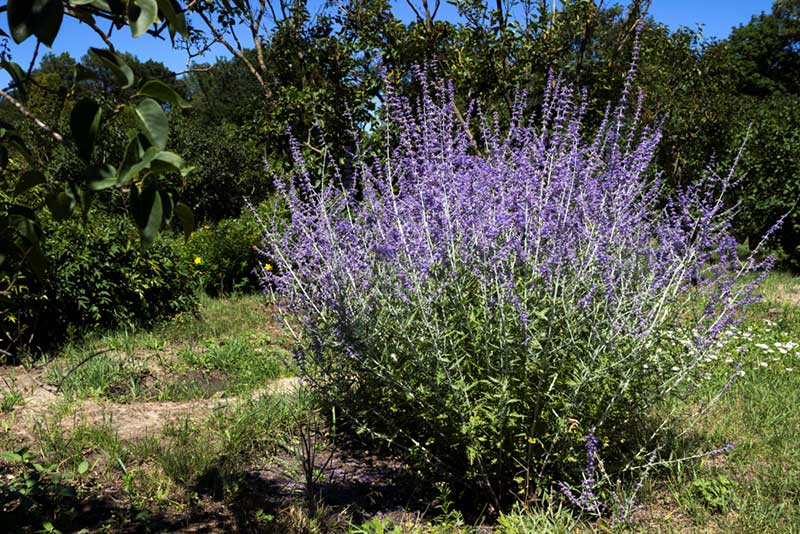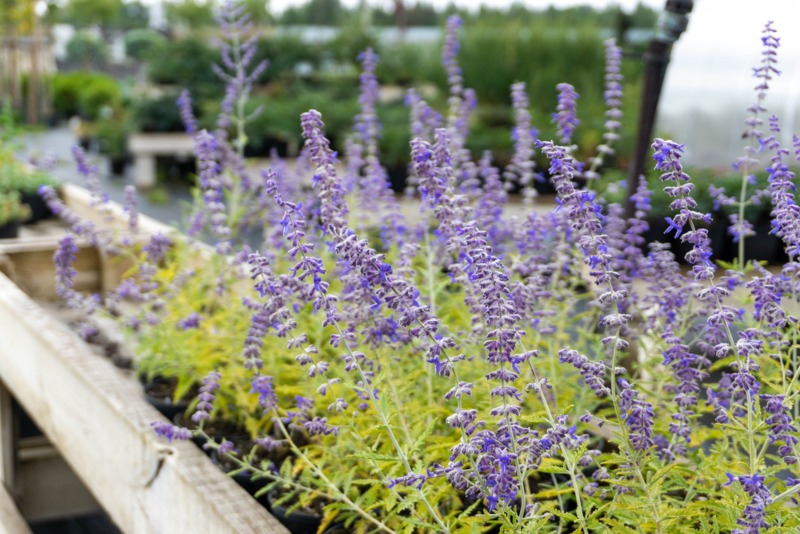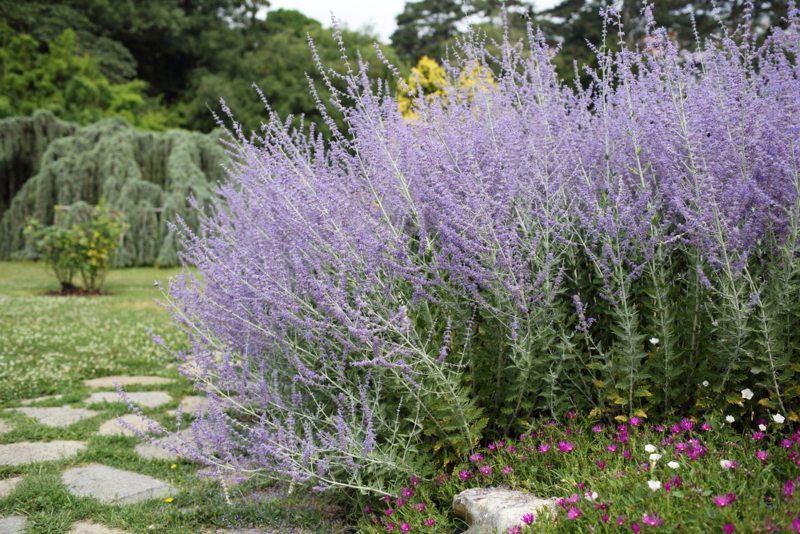Russian sage is a popular perennial plant you are sure to see growing in many gardens or landscapes during the warm summer and fall months. This plant is beautiful and very easy to maintain, making it perfect for everyone, including those without a green thumb.
In this article, we take a deep dive into the details of how to grow Russian sage. We tell you the who, what, when, where, and whys of growing this fabulous flower and how to keep its beautiful lavender flowers and delicate spikes around for years to come.
What is Russian Sage?
The Russian sage plant is well-known to the gardening community for its beautiful lavender-blue flowers that bloom atop a shiny silver stem that grows matching leaves that can be so silvery and chalky they look nearly white.
These flowering subshrubs can grow between three and five feet tall and around two to four feet wide. Plant Russian sage in the late spring, and because of its long blooming period, it will continue to wow an audience well into the blooming seasons.
Russian Sage is a drought-tolerant subshrub that requires little maintenance, making it perfect for anyone wanting a durable plant in their flower bed that will bloom for months.

How to Grow Russian Sage in a Few Simple Steps
Because these sub-shrubs are so durable, planting them, growing them, and maintaining them is a relatively simple process.
Step 1: Preparing a Planting Space
Russian sage thrives off the sun, meaning a full-sun location will give you the best bloom and plant growth. You will also need the proper soil as these plants prefer a space where water can drain freely and not pool. (although you can still use clay soil).
Step 2: Plant Your Russian Sage
Now that you have a proper location, dig a hole roughly one foot deep (or as deep as the root ball) and loosen the soil. For best results, add a few inches of compost to the hole and mix it thoroughly with the soil.
Place the plant into its designated space and fill the hole in completely. Ensure the plant has been inserted sitting up as straight and even as possible, and press the soil just hard enough to make sure the plant is securely in the ground.
Step 3: Water, Water, Water
Although Russian sage is a drought-sustaining plant, the first season of their life is crucial for them to form deep roots into the ground to develop a robust water system that will keep them thriving even throughout the hottest droughts. Watering them frequently during this time will help establish a strong plant in the future.
Step 4: Russian Sage Maintenance
Once your sage is safe in the ground, you will need to maintain the plants throughout their lifetimes for the best results. Although there is little needed, doing these things will improve its appearance and health.
Once your plant is established, you rarely have to worry about water as this type of plant thrives best in dry soil. You can, however, cover the ground around the stem with compost or fertilizer once a year to give it a boost of nutrients.
You will also want to prune your Russian sage in early spring, ensuring you have room for new and healthier plant growth. You do this by cutting away five to six inches of the stem. You may also want to do this at the end of the summer if you do not want the plant to grow too tall.

Russian Sage FAQs
People have many questions regarding Russian sage, how to grow it, and how to maintain it. Here are a few of the frequently asked ones and some answers to help you better understand this beautiful plant.
What Zones Should You Plant Russian sage in?
Russian sage is a hardy plant and can be grown almost anywhere. However, these flowers primarily thrive the best in zones 5-10.
Can You Plant Russian Sage in Partial Sun?
Although Russian sage will grow best in full sun, you can plant it in an area that only receives parietal sun throughout the day. That said, without 100% sunlight exposure, the flowers will not bloom as frequently, and the stems will not be as sturdy, causing the flower to droop.
What is Root Rot?
Root rot is the number one killer of Russian sage and happens when the roots are over-saturated with water, usually due to improper drainage in the soil and overwatering.
Is Russian Sage Edible?
Russian sage has a fabulous scent and is more potent once dried out and crushed up. These plants make for a great room freshener but are toxic and should never be consumed.
What Flowers Match Well in a Garden With Russian sage?
Because these plants are light and feathery they can pair up with several different flowers to make the perfect garden. A few great options for pairing include black-eyed Susans, Day-lilies ( yellow and orange complement the Russian sage best), and orange ConeFlowers.




